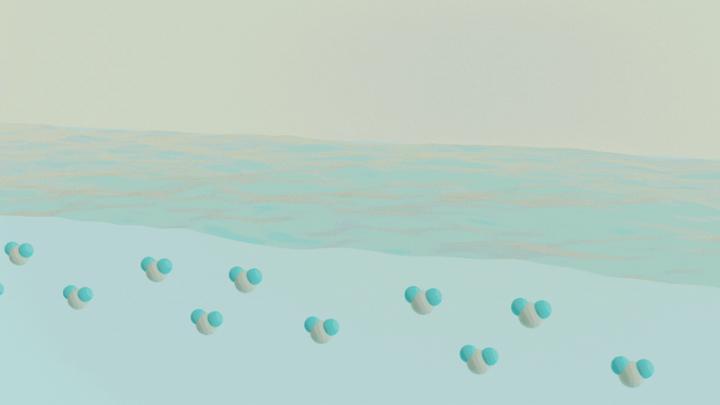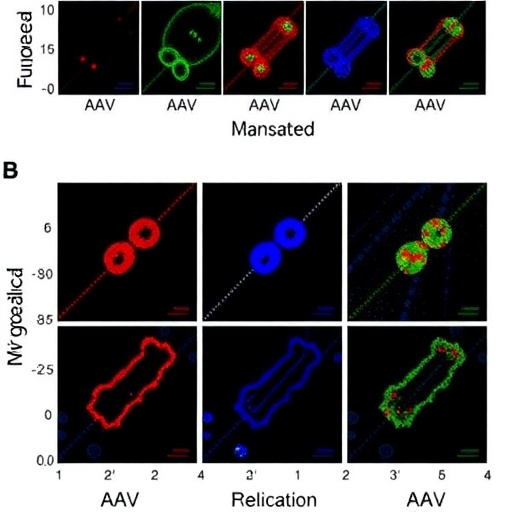
Credit: Michelle Lehman/ORNL, U.S. Dept. of Energy
Real-time measurements captured by researchers at the Department of Energy’s Oak Ridge National Laboratory provide missing insight into chemical separations to recover cobalt, a critical raw material used to make batteries and magnets for modern technologies.
Results published in ACS Applied Materials and Interfaces, track the dynamics of molecules designed to grab cobalt from solutions containing a mixture of similar species.
“Understanding the molecular events that make it possible to separate elements is key to optimizing or creating new, tailored approaches for broad areas of materials recovery,” said Ben Doughty of ORNL’s Chemical Sciences Division.
The study investigates the fundamental chemistry underlying solvent extraction, a method of separating elements using two liquids that do not dissolve into one another, namely oil and water.
When agitated, oil-and-water solutions will self-separate into distinct layers. The phenomenon can be used to transfer targeted materials dissolved in one liquid phase to another, allowing specific elements like cobalt to be separated from everything else in the mix.
“The catch is that you need to have molecules at the interface between these liquid layers that are poised to bind selectively with the materials you want to extract,” said Doughty. “But the complex chemistry happening at the surface has not been well understood.”
Insight into the chemical reactions that enable cobalt and other separations has eluded researchers for decades, owing to the challenges of probing the liquid-liquid interface where oil and water meet. The molecularly thin surface is akin to a needle in a haystack, tending to be obscured by the bulk solution when traditional spectroscopic methods are used. Adding to the difficulty are competing time scales of activity, ranging from femtoseconds — one quadrillionth of a second — to minutes, that conventional static measurements do not capture.
“This interface is essentially the gatekeeper between oil and water layers, where chemical bonds that facilitate extractions are made or broken. To fine-tune the separation process, you need to understand what is happening at this interface in real time,” Doughty said.
ORNL is one of a few groups specializing in techniques to probe a functioning liquid-liquid interface.
Building from previous work on polymers, the team looked at the ligand di-(2-ethylhexyl) phosphoric acid, or DEHPA, an industry-standard extractant that selectively binds with cobalt ions over similar metals such as nickel that often naturally accompany cobalt in solution.
DEHPA dissolved in oil was introduced to water-based solutions with and without cobalt and probed using vibrational sum frequency generation, an ultrafast pulsed laser technique that allowed researchers to home in on reactions taking place at the liquid-liquid interface.
What sets this technique apart from other experimental methods is the capability to track kinetics at the interface, or the changes taking place at the surface during a chemical reaction.
“Solvent extraction is designed to work within specific conditions for a given target, and pH is a commonly adjusted variable. So, our experiment was set up to observe the influence of pH ranges on DEHPA and understand what gives rise to the sweet spot for cobalt extraction,” Doughty said.
The oil-based ligand interacts with water to form aggregates, or groups of molecules that play an important role in extractions. Their job is to bind and transport cobalt, but they need to be the right size and structure to work effectively. The team discovered that hydrogen bonds influence the arrangement of these aggregates and are sensitive to pH changes.
“Our findings highlight the essential role hydrogen bonding plays in developing new extraction methodologies,” said Doughty. “Moreover, we observed that the pH of the bulk solution impacts hydrogen bonding and could potentially be adjusted to tune the liquid-liquid interface for peak performance.”
Understanding the design rules for extraction opens avenues for reducing the energy and environmental costs of processing cobalt and, in turn, securing ethically sourced supply chains.
Cobalt recovery is just one example of how fundamental insight into chemical separations could be beneficial. Informed strategies could be applied to broad areas of critical materials recovery and nuclear waste cleanup where solvent extraction methods are widely employed.
###
The journal article is published as “Hydrogen-Bond-Driven Chemical Separations: Elucidating the Interfacial Steps of Self-Assembly in Solvent Extraction.”
The research was supported by the Office of Science.
UT-Battelle manages ORNL for the DOE Office of Science. The single largest supporter of basic research in the physical sciences in the United States, the Office of Science is working to address some of the most pressing challenges of our time. For more information, please visit https:/
Media Contact
Dawn Levy
[email protected]
Original Source
https:/
Related Journal Article
http://dx.




